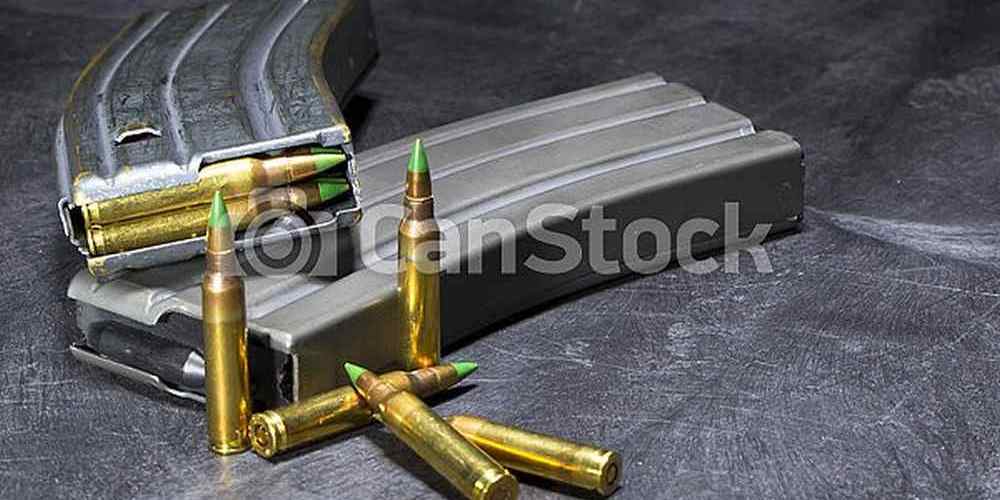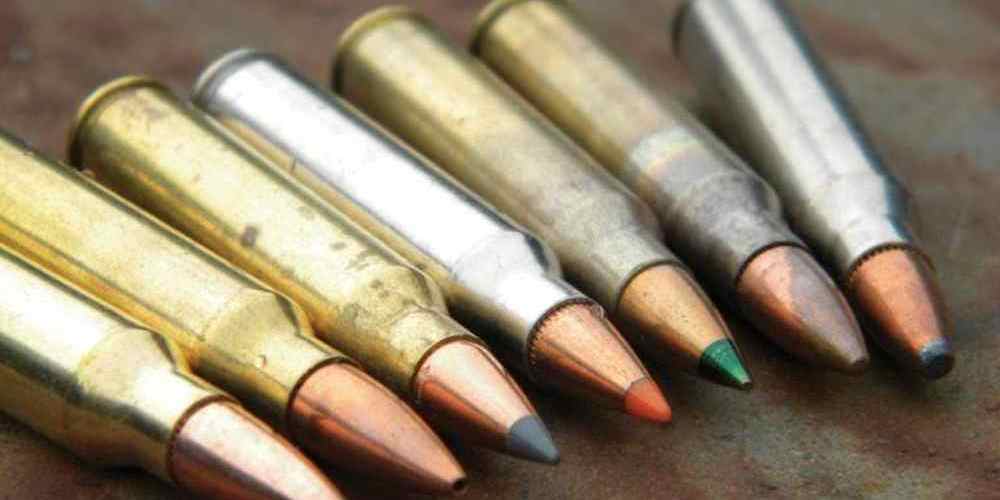“Choose the right ammo for flawless cycling in your AR15 rifle.”
Bullet Weight Discrepancies
If you own an AR15 rifle, you know how important it is to have reliable ammunition that cycles properly through your firearm. However, you may have experienced issues with certain types of ammo not cycling correctly in your rifle. One common reason for this problem is bullet weight discrepancies.
Bullet weight refers to the mass of the projectile that is fired from the rifle. Different types of ammunition come in various bullet weights, ranging from light to heavy. The weight of the bullet can affect how it performs when fired from your AR15 rifle.
When selecting ammunition for your AR15, it is crucial to choose the right bullet weight for your rifle’s specific chamber and barrel length. Using the wrong bullet weight can lead to cycling issues, such as failure to eject or failure to feed properly.
Lighter bullets may not have enough mass to generate sufficient energy to cycle the action of your rifle. This can result in malfunctions such as stovepipes or failure to extract. On the other hand, heavier bullets may create too much recoil, causing the rifle to cycle too aggressively, leading to issues like double feeds or bolt over-rides.
To ensure proper cycling in your AR15 rifle, it is essential to match the bullet weight to your rifle’s specifications. Consult your rifle’s manual or a knowledgeable gunsmith to determine the appropriate bullet weight for your firearm.
In addition to bullet weight, the design of the bullet can also impact cycling performance. Hollow point bullets, for example, may not feed as smoothly as full metal jacket bullets due to their shape. The feeding ramp of your rifle may not be able to guide hollow point bullets into the chamber as effectively, leading to cycling issues.
Another factor to consider is the overall length of the cartridge. If the cartridge is too long or too short, it may not seat properly in the chamber, causing cycling problems. Make sure to use ammunition that is within the recommended overall length for your rifle.
In some cases, the problem may not be with the ammunition itself, but with the rifle’s gas system. AR15 rifles come in different gas system lengths, such as carbine-length, mid-length, and rifle-length. Using the wrong gas system length for your rifle can affect how the rifle cycles with certain types of ammunition.

If you are experiencing cycling issues with your AR15 rifle, it is essential to troubleshoot the problem to determine the root cause. Start by checking the bullet weight and overall length of the ammunition you are using. Make sure it is compatible with your rifle’s specifications.
If the issue persists, consider having a gunsmith inspect your rifle’s gas system and other components for any potential issues. Proper maintenance and care of your AR15 rifle can help prevent cycling problems and ensure reliable performance.
In conclusion, bullet weight discrepancies can impact how well your AR15 rifle cycles with certain types of ammunition. By selecting the right bullet weight and overall length for your rifle, you can avoid cycling issues and enjoy reliable performance at the range or in the field. Remember to consult your rifle’s manual or a professional gunsmith for guidance on selecting the best ammunition for your AR15.
Gas System Issues
If you own an AR15 rifle, you know how important it is for your ammunition to cycle properly in order for your firearm to function effectively. However, you may have encountered issues where certain types of ammo just won’t cycle correctly in your rifle. This can be frustrating and may leave you wondering why this is happening. One of the main reasons why some AR15 ammo won’t cycle properly in your rifle is due to gas system issues.
The gas system in an AR15 rifle plays a crucial role in the cycling of ammunition. When a round is fired, gas is redirected from the barrel to the gas block, which then sends the gas through the gas tube to the bolt carrier group. This gas pressure is what drives the cycling of the rifle’s action, ejecting the spent casing and chambering a new round.
One common issue that can arise with the gas system is over-gassing. This occurs when there is too much gas being redirected to the bolt carrier group, causing the action to cycle too quickly. This can result in excessive recoil, increased wear and tear on the rifle, and even malfunctions such as stovepipes or double feeds. Over-gassing can be caused by a variety of factors, including using the wrong type of ammunition.
Certain types of AR15 ammo, such as high-pressure or overpowered loads, can produce more gas than the rifle’s gas system was designed to handle. This can lead to over-gassing and cause cycling issues in your rifle. Additionally, using low-quality or improperly sized ammunition can also contribute to over-gassing and result in malfunctions.
On the other hand, under-gassing is another common gas system issue that can cause AR15 ammo to not cycle properly in your rifle. Under-gassing occurs when there is not enough gas being redirected to the bolt carrier group, causing the action to cycle too slowly or not at all. This can result in failure to eject or failure to feed malfunctions, where the rifle does not properly eject the spent casing or chamber a new round.
Under-gassing can be caused by a variety of factors, including using low-pressure or underpowered loads that do not produce enough gas to cycle the action. Additionally, using a dirty or fouled gas system can also lead to under-gassing and cause cycling issues in your rifle.
To ensure that your AR15 rifle cycles properly, it is important to use high-quality, properly sized ammunition that is compatible with your rifle’s gas system. Additionally, regularly cleaning and maintaining your gas system can help prevent issues such as over-gassing or under-gassing.
In conclusion, gas system issues are a common reason why some AR15 ammo won’t cycle properly in your rifle. Understanding how the gas system works and being aware of factors that can contribute to over-gassing or under-gassing can help you troubleshoot and resolve cycling issues in your rifle. By using high-quality ammunition and properly maintaining your gas system, you can ensure that your AR15 rifle functions effectively and reliably.
Magazine Problems
If you own an AR15 rifle, you know how important it is to have reliable ammunition that cycles properly through your firearm. However, not all AR15 ammo is created equal, and some types may not function as well in your rifle as others. In this article, we will explore why some AR15 ammo won’t cycle properly in your rifle and what you can do to ensure smooth operation.
One common issue that can cause AR15 ammo to not cycle properly is the type of magazine you are using. Magazines play a crucial role in feeding ammunition into the chamber of your rifle, and if they are not functioning correctly, it can lead to cycling problems. Some magazines may not be compatible with certain types of ammunition, leading to feeding issues and failures to cycle.
Another factor that can affect the cycling of AR15 ammo is the design of the ammunition itself. Some types of ammunition may have a different shape or size than others, which can impact how well they feed into the chamber of your rifle. For example, ammunition with a flat or blunt tip may have trouble feeding properly, causing cycling issues.
In addition to magazine and ammunition design, the overall quality of the ammunition can also impact how well it cycles in your rifle. Lower-quality ammunition may have inconsistencies in powder charge or bullet weight, leading to cycling problems. It is essential to use high-quality ammunition from reputable manufacturers to ensure reliable cycling in your AR15 rifle.
If you are experiencing cycling issues with your AR15 ammo, there are a few steps you can take to troubleshoot the problem. First, check the condition of your magazine and make sure it is clean and free of debris. Dirty or damaged magazines can cause feeding issues, leading to cycling problems.
Next, inspect the ammunition you are using and make sure it is in good condition. Look for any signs of damage or defects that could be causing cycling issues. If you suspect the ammunition is the problem, try using a different type or brand to see if that resolves the issue.
Finally, consider having your rifle inspected by a qualified gunsmith to ensure there are no mechanical issues causing the cycling problems. A gunsmith can help diagnose any issues with your rifle and make any necessary repairs or adjustments to improve cycling performance.
In conclusion, there are several reasons why some AR15 ammo may not cycle properly in your rifle. Magazine problems, ammunition design, and overall quality can all impact cycling performance. By taking the time to troubleshoot and address these issues, you can ensure smooth operation of your AR15 rifle and enjoy reliable performance at the range or in the field.
Dirty or Fouled Chamber
If you own an AR15 rifle, you know how important it is for your ammunition to cycle properly in order to ensure reliable performance. However, you may have experienced issues with certain types of ammo not cycling correctly in your rifle. One common reason for this problem is a dirty or fouled chamber.
When you fire your AR15, the spent cartridge casing is ejected from the chamber, and a new round is loaded in. If the chamber is dirty or fouled, this process can be disrupted, causing the rifle to malfunction. A dirty chamber can prevent the cartridge from seating properly, leading to feeding issues and failures to eject.
To prevent this problem, it is important to regularly clean and maintain your AR15 rifle, paying special attention to the chamber. Use a cleaning rod and brush to remove any built-up residue or fouling from the chamber, ensuring that it is clean and smooth for proper cycling of ammunition.
In addition to cleaning the chamber, it is also important to use high-quality ammunition that is compatible with your rifle. Some AR15 rifles are more sensitive to certain types of ammo, especially those with steel casings or coatings. These types of ammo can cause increased friction in the chamber, leading to cycling issues.
If you are experiencing cycling problems with your AR15, try switching to a different brand or type of ammunition to see if that resolves the issue. It may take some trial and error to find the right ammo that cycles properly in your rifle, but it is worth the effort to ensure reliable performance.
Another factor to consider when dealing with cycling issues is the overall condition of your rifle. If your AR15 is not properly maintained or has worn out parts, it can affect the cycling of ammunition. Regularly inspect and replace any worn or damaged parts to keep your rifle in top working condition.
In conclusion, dirty or fouled chambers can cause cycling issues in your AR15 rifle, leading to malfunctions and failures to eject. To prevent this problem, make sure to regularly clean and maintain your rifle, paying special attention to the chamber. Use high-quality ammunition that is compatible with your rifle, and consider the overall condition of your rifle when troubleshooting cycling issues. By taking these steps, you can ensure that your AR15 cycles properly and performs reliably every time you fire it.
Inadequate Lubrication
If you own an AR15 rifle, you know how important it is to keep it properly maintained in order to ensure optimal performance. One common issue that many AR15 owners encounter is ammunition that won’t cycle properly in their rifle. This can be frustrating and even dangerous if not addressed promptly. One of the reasons why some AR15 ammo won’t cycle properly is inadequate lubrication.
Proper lubrication is essential for the smooth operation of any firearm, including the AR15. Without adequate lubrication, the moving parts of the rifle can become sticky and sluggish, leading to malfunctions such as failure to eject or failure to feed. This can result in a jammed rifle, which can be not only inconvenient but also potentially dangerous in a self-defense or hunting situation.
To prevent these issues, it is important to regularly clean and lubricate your AR15 rifle. This includes applying a thin layer of lubricant to the bolt carrier group, the buffer spring, and other moving parts of the rifle. This will help ensure that the rifle functions smoothly and reliably, even when using ammunition that may be less than ideal.
Inadequate lubrication can also cause excessive wear and tear on the internal components of the rifle. Without proper lubrication, the metal-on-metal contact between moving parts can lead to increased friction and heat, which can cause premature wear and potentially damage the rifle over time. By keeping your AR15 properly lubricated, you can help extend the life of your rifle and ensure that it continues to function reliably for years to come.
In addition to regular cleaning and lubrication, it is also important to use high-quality ammunition in your AR15 rifle. Some lower-quality or surplus ammunition may be more prone to causing malfunctions due to inconsistencies in the manufacturing process. This can include variations in the size and shape of the cartridges, as well as differences in the powder charge or bullet weight.
When using ammunition that is not cycling properly in your AR15 rifle, it is important to first check the lubrication of the rifle and ensure that all moving parts are properly lubricated. If the issue persists, it may be necessary to try a different brand or type of ammunition to see if that resolves the problem. It is also a good idea to consult with a qualified gunsmith or firearms expert if you continue to experience cycling issues with your rifle.
In conclusion, inadequate lubrication is a common reason why some AR15 ammo won’t cycle properly in your rifle. By regularly cleaning and lubricating your rifle, you can help prevent malfunctions and ensure that your rifle functions smoothly and reliably. Additionally, using high-quality ammunition can also help prevent cycling issues and ensure optimal performance. By taking these steps, you can enjoy shooting your AR15 rifle with confidence and peace of mind.






